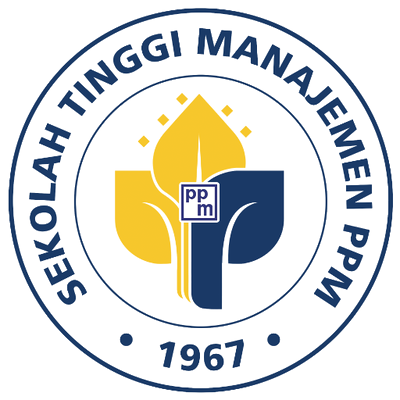Consumers Mapping and Green Marketing Design for Products with Reusable Packaging
Abstract
Keywords
Full Text:
PDFReferences
Alodokter. (2021). Dampak sampah plastik bagi lingkungan dan kesehatan manusia. Retrieved June 10, 2022, from https://www.alodokter.com/dampak-sampah-plastik-bagi-lingkungan-dan-kesehatan-manusia
BSN. (2017). Detail SNI. Badan Standarisasi Nasional. Retrieved June 20, 2022, from bsn.go.id/SNI/DetailSNI/11878
Chen, Y.-S., & Chang, C.-H. (2013). Greenwash and green trust: the mediation effects of green consumer confusion and green perceived risk. Journal of Business Ethics, 114, 489–500. https://doi.org/https://doi.org/10.1007/s10551-012-1360-0
Coelho, P. M., Corona, B., ten Klooster, R., & Worrell, E. (2020). Sustainability of reusable packaging–current situation and trends. Resources, Conservation and Recycling: X, 6(March), 100037. https://doi.org/10.1016/j.rcrx.2020.100037
Dangelico, R. M., & Vocalelli, D. (2017). “Green marketing”: An analysis of definitions, strategy steps, and tools through a systematic review of the literature. Journal of Cleaner Production, 165, 1263–1279. https://doi.org/https://doi.org/10.1016/j.jclepro.2017.07.184
Das, S. M., Dash, B. M., & Padhy, P. C. (2012). Green marketing strategies for sustainable business growth. Journal of Business Management & Social Sciences Research (JBM&SSR), 1(1), 82–87. www.borjournals.com
Field, A. P. (2018). Discovering statistics using IBM SPSS statistics (Fifth). SAGE Publications Ltd.
Fleury, A., Fernanda, M., Melo, D., Oliveira, L., Souza, R., & Yaryd, R. (2016). A link between CSR strategy and sustainable operations. The 8th International Conference on Production Research, 1–6.
Handayani, W., Prayogo, R., & Prayogo, R. A. (2017). Green consumerism: an eco-friendly behaviour form through the green product consumption and green marketing, 7(2), 25-29. https://doi.org/10.25139/sng.v7i2.364
Hanifah, A. D., Arifin, Z., & Hidayat, K. (2016). Pengaruh bauran pemasaran berwawasan green marketing terhadap keputusan pembelian (survei pada pembeli yang menghuni perumahan Ijen Nirwana Malang). Jurnal Administrasi Bisnis, 32(2), 23–32. http://administrasibisnis.studentjournal.ub.ac.id/index.php/jab/article/view/1260
Hariyani, R., & Sartana, B. T. (2013). Praktik green marketing pada perusahaan – perusahaan di indonesia. Jurnal Fakultas Ekonomi Universitas Budi Luhur Jakarta, 1–20. https://astri.budiluhur.ac.id/wp-content/uploads/2010/03/abstrak-1-vol-7.pdf
Kemendag. (2019). Gelar bimbingan teknis pengembangan produk, kemendag dukung peningkatan produk ramah lingkungan. Retrieved July 14, 2022, from https://www.kemendag.go.id/public/files/2019/07/11/gelar-bimbingan-teknis-pengembangan-produk-kemendag-dukung-peningkatan-produk-ramah-lingkungan-id0-1562844436.pdf
Lu, L., Bock, D., & Joseph, M. (2013). Green marketing: What the millennials buy. Journal of Business Strategy, 34(6), 3–10. https://doi.org/10.1108/JBS-05-2013-0036
Manongko, A. (2018). Green marketing (suatu perspektif marketing mix & theory of planned behavior). Yayasan Makaria Waya.
Menlhk. (2019). Peraturan Menteri Lingkungan Hidup dan Kehutanan Republik Indonesia Nomor P.75/MENLHK/SETJEN/KUM.1/10/2019 Tentang Peta Jalan Pengurangan Sampah Oleh Produsen. Retrieved July 14, 2022, from https://jdih.maritim.go.id/cfind/source/files/permen-hk/p_75_2019_peta_jalan_sampah_menlhk.pdf.
Ottman, J. A. (2017). The new rules of green marketing: Strategies, tools, and inspiration for sustainable branding 1st Edition. London: Routledge. https://doi.org/hhttps://doi.org/10.4324/9781351278683
Pant, M., Panwar, D., Chaudhary, S., & Kumar, S. (2020). Environmental impact of digital marketing on purchase intension towards green products. Journal of Critical Reviews, 7(11), 1907–1919. https://doi.org/10.31838/jcr.07.11.297
Peattie, K. (2016). Green marketing. in the marketing book (seven, p. 616). Routledge. Retrieved October 01, 2023, from https://www.taylorfrancis.com/chapters/edit/10.4324/9781315890005-28/green-marketing-ken-peattie
Putra, D. R., & Prasetyawati, Y. R. (2021). Pengaruh green product terhadap minat beli ulang konsumen melalui green advertising (studi terhadap konsumen starbucks). Jurnal Manajemen Pemasaran, 15(2), 69–74. https://doi.org/10.9744/pemasaran.15.2.69-74
Ruhulessin, M. F. (2023). Sepanjang tahun 2022, ada 12,54 juta ton sampah plastik di Indonesia. Retrieved August 10, 2023, from https://www.kompas.com/properti/read/2023/06/15/180000421/sepanjang-tahun-2022-ada-12-54-juta-ton-sampah-plastik-di-indonesia
Sarstedt, M., & Mooi, E. (2019). A concise guide to market research: the process, data, and methods using IBM SPSS statistics (Third). Springer-Verlag GmbH. https://doi.org/https://doi.org/10.1007/978-3-662-56707-4
Setyawati, H. A., Kartinah, S., & Manajemen, P. S. (2017). Penerapan green marketing melalui desain. Jurnal Pro Bisnis, 10(2), 16–26. http://dx.doi.org/10.35671/probisnis.v10i2.581
Situmorang, S. H., & Lufti, M. (2014). Analisis data untuk riset manajemen dan bisnis (3rd ed., Issue July). USU Press.
Sugiyono. (2019). Metode penelitian kuantitatif, kualitatif, dan R&D (Third). CV Alfabeta.
Tarabieh, S. M. Z. A., & Al_Majali, M. M. (2021). Impact of external green marketing mix on customer satisfaction: Study of jordanian green consumers. Al-Hussein Bin Talal University Journal of Research, 7, 538–567. https://doi.org/10.36621/0397-007-988-020
Wu, S.-I., & Chen, Y.-J. (2014). The impact of green marketing and perceived innovation on purchase intention for green products. International Journal of Marketing Studies, 6(5), 81–100. https://doi.org/10.5539/ijms.v6n5p81
Zaky, M. H., & Purnami, N. M. (2020). Green marketing mix berpengaruh terhadap keputusan pembelian produk big tree farms di lotus food services. E-Jurnal Manajemen Universitas Udayana, 9(2), 678. https://doi.org/10.24843/ejmunud.2020.v09.i02.p14
Zhu, Z., Liu, W., Ye, S., & Batista, L. (2022). Packaging design for the circular economy: A systematic review. Sustainable Production and Consumption, 32, 817–832. https://doi.org/10.1016/j.spc.2022.06.005
DOI: https://doi.org/10.34149/jmbr.v20i3.589
Indexing
JMBR Editorial Office: PPM School of Management, Jl. Menteng Raya 9-19 Jakarta 10340 Phone: 021-2300313 ext 2354

License
JMBR is using CC BY License
This work is licensed under a Creative Commons Attribution 4.0 International License.



















